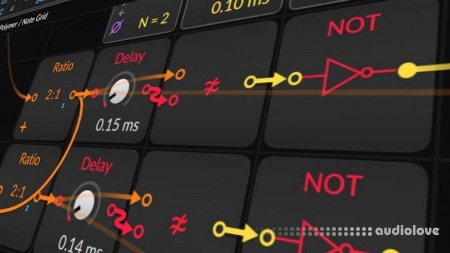Polarity Music Too Lazy For Notes

In this Bitwig tutorial, we explore an interesting approach to music creation:
This approach in Bitwig allows for creative and unconventional music creation without relying on traditional note input methods.
Starting with Polymer Synthesizer: We begin by inserting a Polymer synthesizer on an instrument track.
Using Node Grid for Monophonic Mode: Instead of traditional nodes, we utilize a node grid in monophonic mode, deleting node inputs.
Pitch and Ratio Selection: A pitch is selected randomly (e.g., D#3), and additional nodes are created, each using a ratio of the previous node.
Step Modulation for Variation: We apply step modulation, setting it to five steps and randomizing to modulate the denominator. This creates a polyrhythm effect.
Trigger and Head Sounds Generation: By comparing pitch to a delayed pitch using a comparator, we generate triggers for creating head sounds.
Reverb Addition and Sequencing: A reverb is added for depth. We then sequence the notes using a node receiver and ARP, adjusting steps and octave changes.
Quantizing and Second Polymer Synthesizer: Post-quantization, a second Polymer is introduced, using step modes for varied settings.
FX: Convolution and Delay: In the FX track, convolution and delay are applied for textural enhancement.
Inverting Pitches with Node Grid: A second node grid inverts pitches and quantizes them, aligning with the correct scale.
Chords and Multiple Voices: We use multiple voices for chords, and an octaver to adjust pitches.
Project Demonstration: The tutorial concludes with a demonstration of the project, highlighting the ease of generating notes using the node grid without a piano roll. The technique draws inspiration from the subharmonic method used in Moog synthesizers.
Home page
DOWNLOAD
